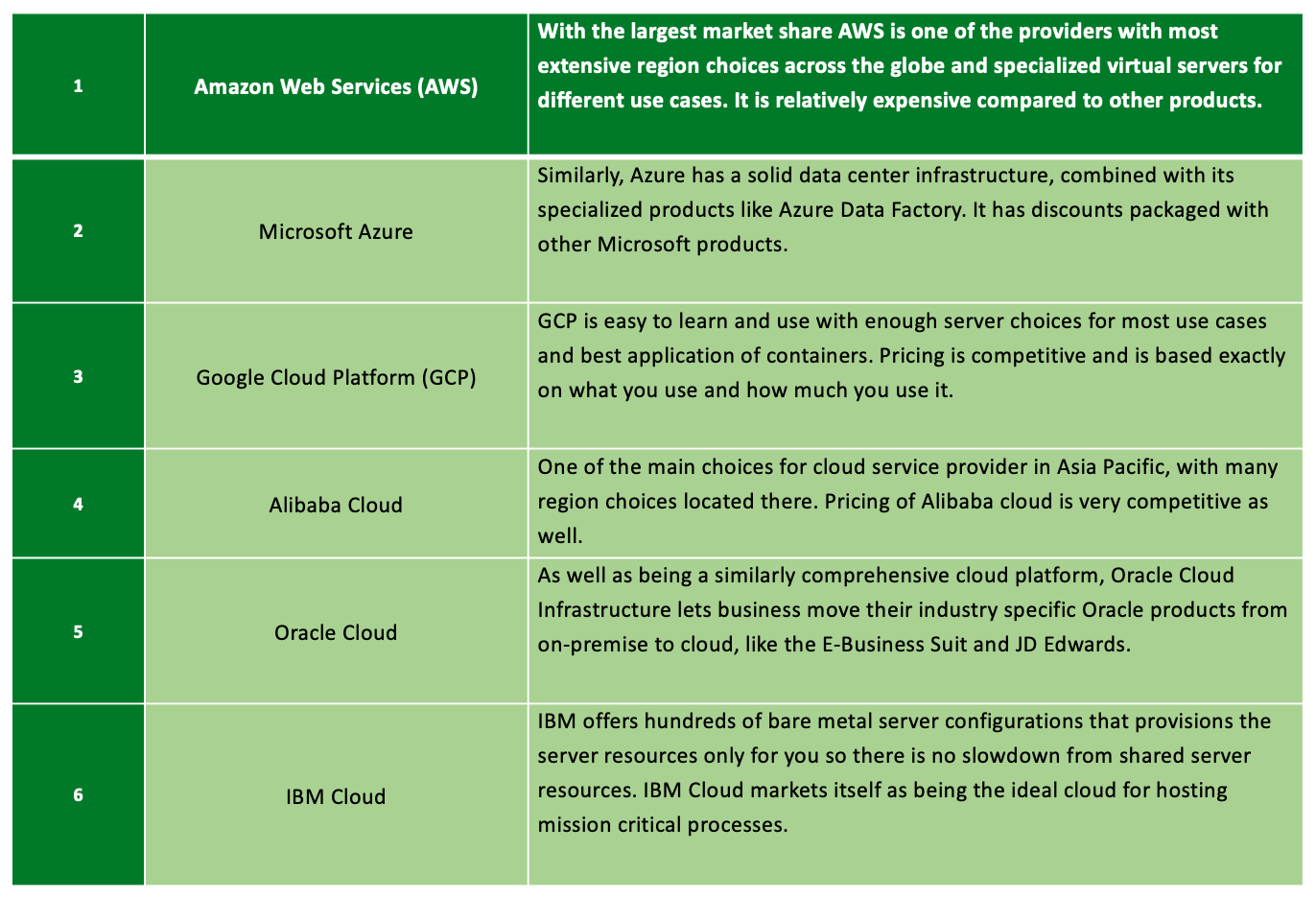
Consolidating your business data, from many different systems, could be a laboursome task. Thankfully, this task is becoming simpler with cloud services. Cloud services, like Google Cloud or Microsoft Azure, allow you access to IT components like servers and databases for your business using a pay as you use plan, and offer a consolidated package of essential business tools available with an easy-to-access website. With such tools it is possible to get a daily updated view of your business in a one related database.
The table below summarizes the offerings of six of the major cloud service providers:

Database hosting and access to virtual machines (VMs) are particularly valuable. VMs are computers or servers that exist within the cloud. Together with database hosting tools, they allow you to set up a data pipeline once and get a consolidated view of your business on demand, with no physical components to maintain.
VMs can automatically run custom code to move and transform your data. For example, you can write a piece of code to access the application programming interface (API) of your accounting system to download the data and move it into your central database. You can also host this consolidated database within the cloud, as many of these services offer all kinds of database hosting options such as SQL and MySQL, with adjustable performance. By combining these tools, you can connect to all the data sources you want and consolidate them in one place all within the cloud, as shown in the schematic below.

Cloud services are available from many service providers, but the specific choice of product will depend on your data extraction and viewing needs. To illustrate, let’s compare tools from two of the big three cloud services in North America: Google Cloud Platform and Microsoft Azure.
Google Cloud Platform has a range of easy-to-use business tools that are well integrated with each other, including its own database product: Google Big Query. Using Google Big Query, it is possible to perform in-depth analysis of and reporting from your database.
Microsoft Azure offers Azure Data Factory which lets you move and transform data with possibly zero coding. For data pipelines Azure Data Factory can be a good choice if it is compatible with your data sources.
Choosing between cloud service providers depends on a set of practical considerations. For example, how much custom coding do you need to meet your needs in full?
Sapling was asked to undertake a database project for a client. Although we had previous experience with Azure Data Factory for this engagement, we chose to use Google Cloud Service as it more closely matches the client’s existing IT infrastructure. Even so, in order to automate the process of getting data from the business’ complex data sources and create reports, we needed to use custom code running on a VM and then consolidate the data in a cloud database. Additionally, Sapling also created visualizations to understand the business’s standing at a glance.
Although initial set up might be complex, cloud services provided the easiest way to consolidate businesses data with the ultimate advantages of being able to access the data from anywhere and not having to maintain physical servers.




